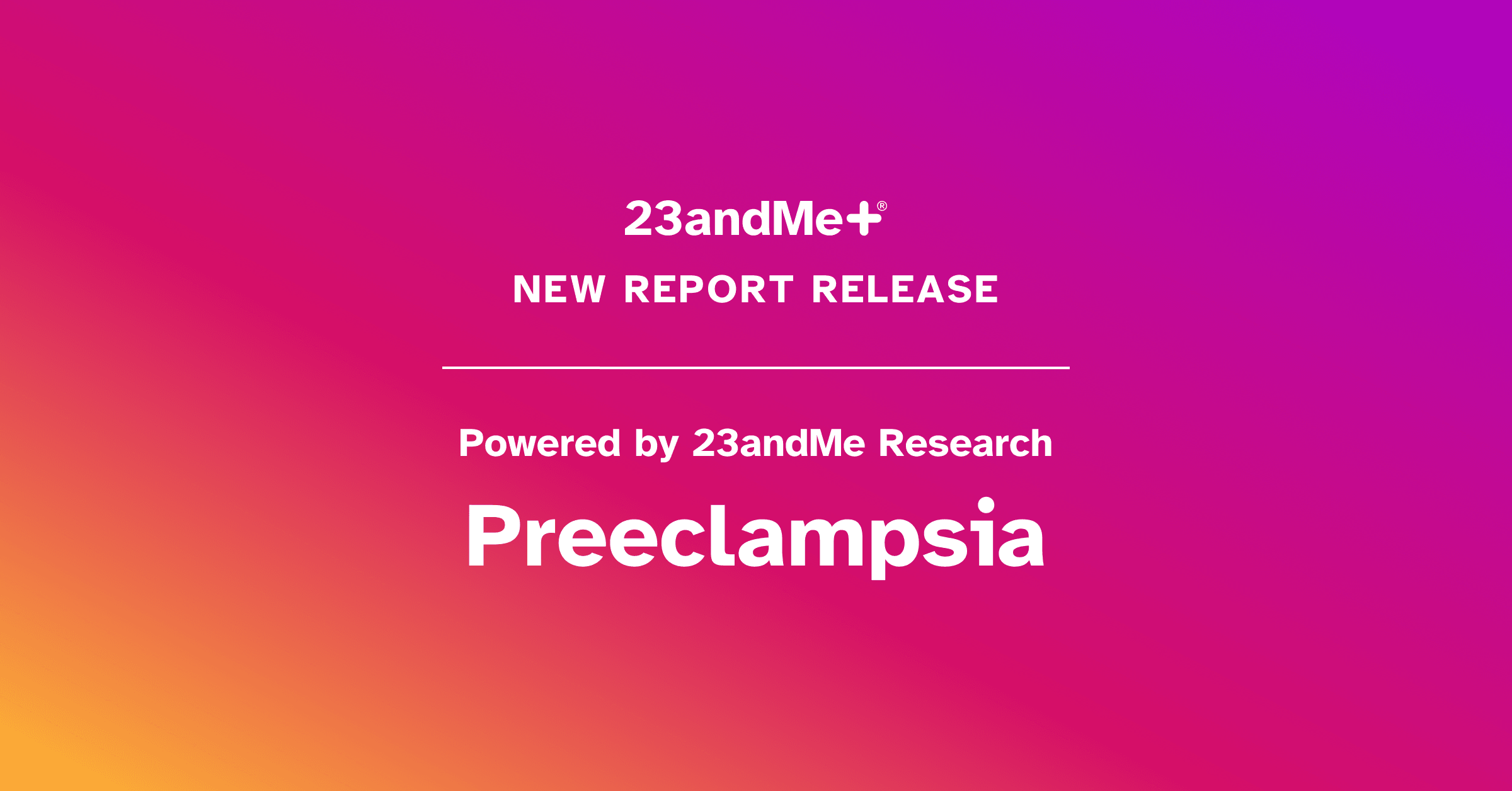
This week, we released a new report powered by 23andMe research on preeclampsia for 23andMe+ members.
Preeclampsia is a pregnancy complication that causes persistent high blood pressure and, in some cases, injury to organs like the liver and kidney.
It’s diagnosed based on a combination of high blood pressure, other symptoms, and abnormal lab tests, such as elevated protein levels in the urine.
What is preeclampsia?
Preeclampsia affects about 4% of pregnancies in the United States and up to 8% of pregnancies worldwide.
Onset and severity can vary greatly. Typically, it develops in the second half of pregnancy and resolves after delivery, although some cases may develop postpartum.
Signs and symptoms
Preeclampsia does not always cause symptoms. If symptoms are present, they may be difficult to distinguish from normal pregnancy experiences like fatigue and swelling.
Signs of the condition include:
- Severe headache
- Changes in vision
- Abdominal pain
- Agitation or confusion
- Shortness of breath
Factors that impact the likelihood of developing preeclampsia include genetics, personal or family history of the condition, having other health conditions like high blood pressure, diabetes, or chronic kidney disease, first pregnancy, pregnancy from in vitro fertilization, or pregnancy with multiple babies.

Being over the age of 35 and being of African or African American descent can also increase the chance of developing the condition.
A new report
Our new report is powered by data from people who have consented to participate in 23andMe research and uses machine learning techniques to estimate an individual’s likelihood of developing preeclampsia.
This estimate uses a statistical model that includes 14,462 genetic markers and information on an individual’s ethnicity and birth sex. This white paper explains the science and methodology behind our new report.
Long-term health impacts
Having preeclampsia puts you at a higher risk of developing it in the future during subsequent pregnancies.
The condition is also associated with a long-term increased risk of developing high blood pressure, heart disease, and kidney disease for the parent.
Treatment
Preeclampsia requires monitoring through pregnancy, delivery, and postpartum period to minimize health impacts for both the parent and child.
Depending on the severity and timing of the condition, the most effective treatment is often consideration of early delivery via induction or cesarean section.
Prevention
While there is no proven way to prevent preeclampsia, healthy lifestyle habits can help manage blood pressure.
- Get active. Establish a regular exercise routine before pregnancy and talk to your doctor about how to stay active during pregnancy
- Maintain a healthy weight before pregnancy, and if you are pregnant, talk to your doctor about healthy weight gain during pregnancy
- Eat a low-sodium, heart-healthy diet
- Limit caffeine and alcohol consumption
- Try to get enough sleep
- Avoid smoking
Learn more
23andMe’s new preeclampsia report (powered by 23andMe Research) is available to all annual members of the 23andMe+ Membership. To view your report, go here.
Want to join our 23andMe+ Membership?
Find out more here.




